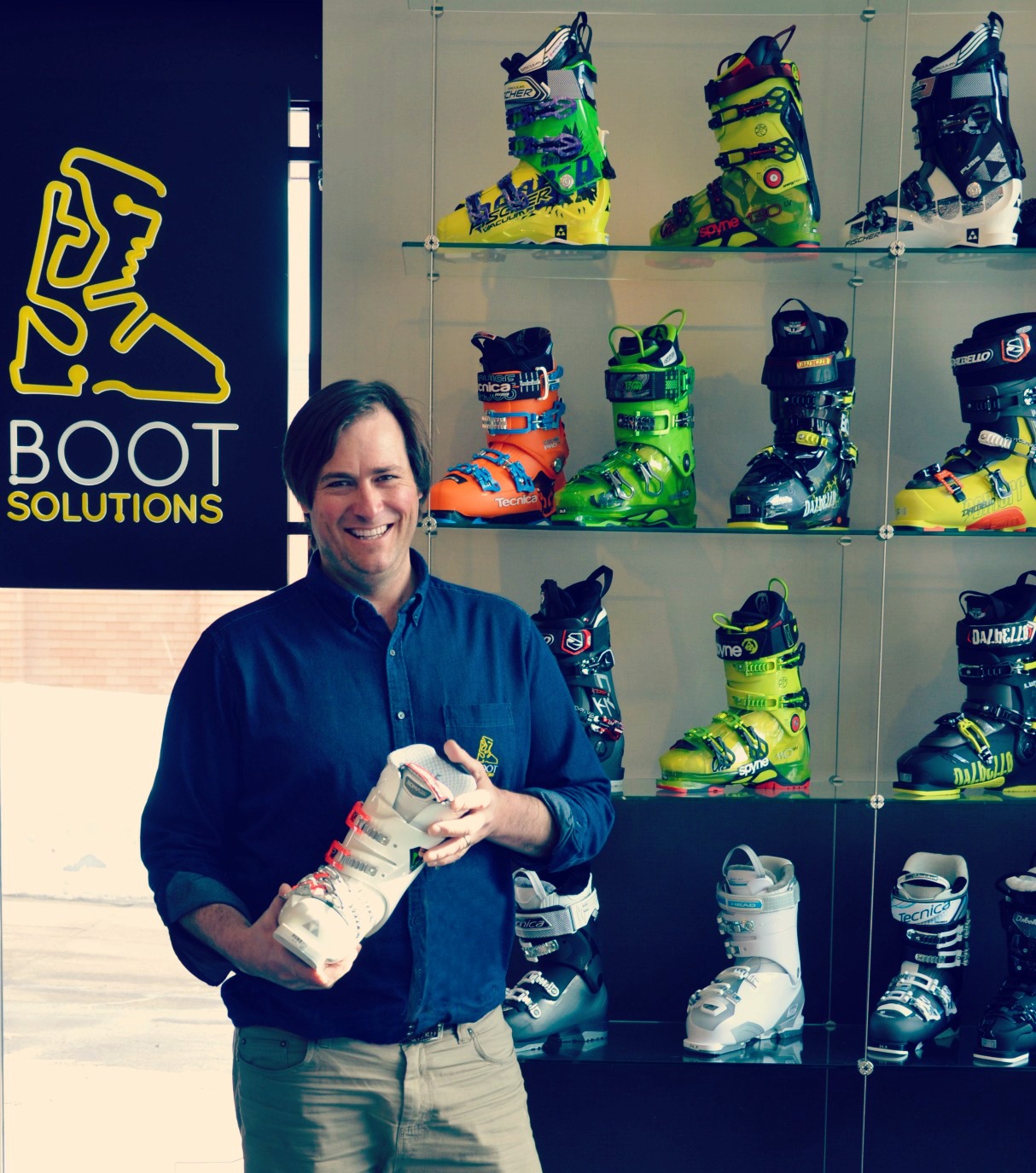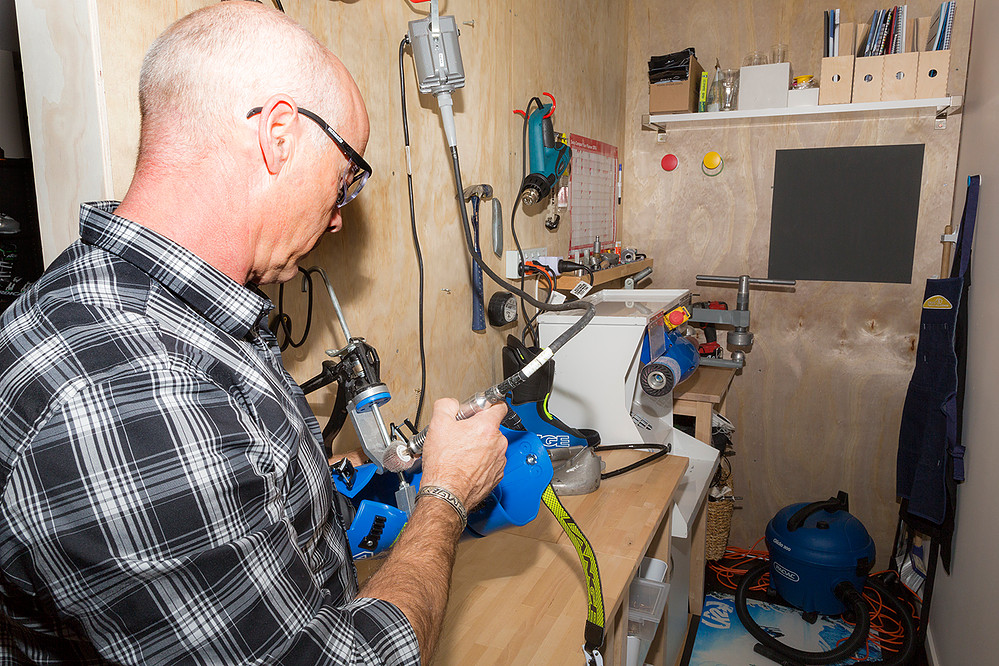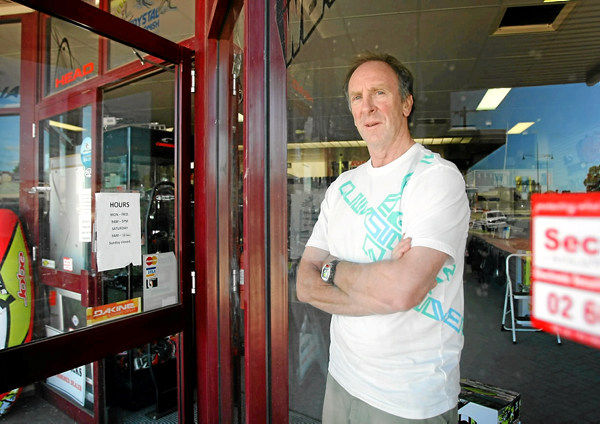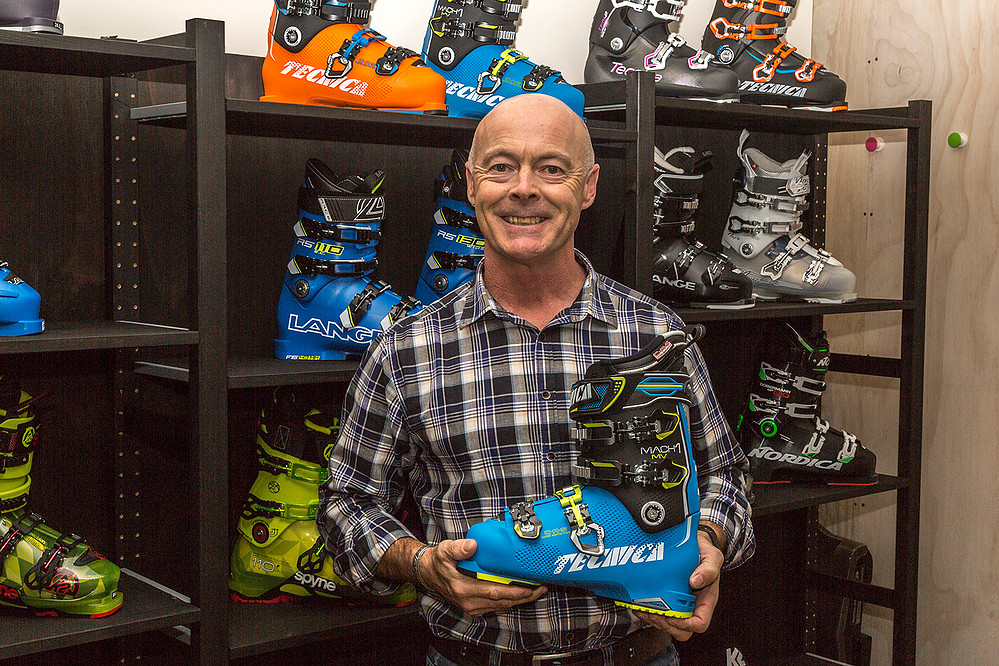Need new ski boots? We asked some of Australia’s best boot fitters what you need to know about buying and caring for your boots.
Not long till the start of the southern ski and snowboard season and your thoughts turn to the slopes. If you’re a skier you may be thinking you can squeeeeeze one more season out of those packed out boots of yours, or maybe you just take voltaren, strap your feet into those ‘tight in all the wrong place’ ski boots and head out and hope for the best.
There’s no need for pain on the slopes if you can avoid it and with the right boots you can ski pain free and improve your skiing at the same time.
Check out our boot fitting page for all the information from the experts you need to know.
In the meantime we touched base pre season with some of Australia’s best boot fitters to get their thoughts on boot fitting, heel lifts, care of your ski boots and more for this year.
Ned Buckley, Boot Solutions Niseko & Hakuba

What makes a good boot fitter?
Someone with lots of patience and who can can listen to people and understand them. They must have good product knowledge and understand the sport. It helps to have manual dexterity, be good with their hands and they must be flexible and open to new ideas and to learning from their peers. Having an ability to show empathy is also important as they often have to deal with people who have been in pain and discomfort.
What questions should you ask a boot fitter when shopping around to find the right one for you?
Firstly ask them what boots they think will suit you best. Their answer will give it away as they should initiate an interview first and they should answer you with some questions like: What kind of skier are you? may I look at your feet first? How often do you go skiing? Have you owned boots in the past? Have you had problems with boots in the past? What are you hoping to get out of your boots? Are you more interested in comfort? or performance? These are all questions a good bootfitter should ask.
Ask them how they will measure you up for size: a good bootfitter will measure your foot on a device as well as in the boot shell (shell fitting).
Ask them how many pairs they have for you to try on: A good bootfitter will narrow it down to 2-3 pairs based on their assessment of the interview with you and looking at and measuring your feet.
What is the most common boot fitting mistakes (that you have to correct)?
The wrong size boot: too big. Badly made custom innersoles: making a good quality and comfortable innersole take practice and requires training as well as understanding the anatomy and mechanics of the foot. Padding of the liner or stretching of the shell in the wrong place.
What is the best way to look after your ski boots?
Keep them buckled up when not wearing them and invest in a dryer to keep the liners fresh and clean.
How should one store their ski boots?
Dry them out completely first, buckle them up, and store them upright in a dry, cool, clean and dark place such as in your bedroom cupboard or garage. If you live in a very humid environment (tropics), then you should consider storing them in a airconditioned room, or vacuum bag.
Boot warmer or not boot warmers?
Boot warmers if you suffer from cold feet and hands but try clean dry socks and a boot dryer first as boot warmers dont work in wet boots.
Orthotics or not orthotics?
Definitely orthotics. Custom innersoles provide benefit for most people. The nature of the ski boot being hard plastic means that it is very good at controlling movment in all three planes, orthotics simply help place the foot in a good and comfortable position and then let the boot do the rest.
Heel lift or not heel lift?
Not everyone needs a heel lift. Call me cynical, but it is often a lazy bootfitter’s technique. They insert a heel lift and hope for the best. Some people do benefit from them but get a good boot fitter first.
Andy Burford, The Boot Fitter Jindabyne

A good boot fitter is one who is passionate about his profession and focused on giving the customer the best boot for their foot, lower leg shape and skiing ability and then willing to make adjustments for foot stability, comfort, alignment and performance. They should have a solid understanding of how a good boot fit can effect the customer’s skiing and the finished result should be based on customer and fitter agreeing on success.
I do recommend footbeds made for skiing which are made to align and support the foot in the boot. An orthotic is made to adjust your gait while walking as well as support and align the foot and typically a stiff material which doesn’t allow any pro perception of the foot which I feel is important for skiing.
Heel lifts are fine if they are fitted because of minimal Dorsi flexion, which once fitted allow the skier to get in to a balanced stance.
The biggest problem I see is boots that are too big and the wrong boot for the customer’s foot shape.
Ask your prospective boot fitter how they gained their boot fitting experience, how do you decide the right boot for me, what range of boots do you have and how did you choose them, do you have all the equipment to make adjustments for fitting and do you guarantee my fit?
To look after your boots ensure you always dry your liners and use a sole protection for walking (cat tracks or similar) to keep the sole flat and always ensure the tongue or the liner is sitting straight and buckle boots lightly.
When storing your boots make sure they are dried out completely, remove the liner and check if the outside is wet and if so then air dry. Wipe off any dirt and put back together and buckle lightly, ensure correct overlap on the lower shell then store boots in a area in the house that is dry and ideally the least hot.
I think boot heaters are great for customers with cold feet but the heated socks are getting much better and I think are worth considering, look for the thinner thickness models.
If you do choose to use a boot heating room, and they have the heated pipes that you sit your boot on, remove your custom footbed to avoid melting.If your shell has been stretched, remove your liner and put in the drying room and leave the shell outside the room or on the floor if it is cool.
Paul Oberin, Pauls Ski Shop Wodonga

What makes a good boot fitter?
In my opinion, a good boot fitter will spend the time to ask the right questions about what the customer is seeking, such as how well they ski (Novice to expert), and what type of skiing they usually prefer to do (moguls, park, groomers only), even find out what type of ski the customer uses, there is no point selling a race oriented boot to someone who uses a park ski.
.A good fitter will have done all the boot fitting courses on offer within the industry, and should continually be updating their knowledge by attending new courses as they come up, to keep up with new technology.
What questions should you ask a boot fitter when shopping around to find the right one for you?
To determine if the fitter is any good you could ask if they offer a boot fit guarantee and for how long, they should have already done some research hopefully and found out that the fitter has a reputation for doing a good job. If they want to see the fitter at the shop, they should book an appointment; otherwise they may end up with a staff member who is not the boot fitter.
A customer should make sure of one exceptionally important step is done when buying new boots, and that is the fitter should remove the liner of the boot and size the foot in the boot shell, if the fitter doesn’t do this, I would leave the shop and find another shop to buy boots.
A boot fit requires very good communication between the fitter and the customer, a customer must not be shy and quiet during the fit, if they feel there is something not quite right they must speak up and tell the fitter, otherwise the fitter may not know they need to fix this issue.
What are the most common boot fitting mistakes?
By far the most common problem I see is boots that are causing a problem because they are at least one size too big. A simple test to tell if you are in the right size boot is to take out the footbed or insole and place your foot over it, with your heel lined up with the back of the footbed, your toes should hang slightly over the front end of the footbed, if you can see more than a few mm of footbed past your toes, there is a very good chance your boots are too big for you.
If you are in boots that are too big you will have a lot more movement within the boot, this will lead to poor transmission of movement to place the ski on an edge, in rougher terrain this will see the skis move around a lot and be harder to control.
A common sign that your boots are too big is, sore shins due to shin bang, and black or bruised toes called toe bang.
A problem that is less common now but a hard one to pick up for some fitters is a liner that is too narrow, often a customer will come in with symptoms that the boot is too narrow, the fitter will assume the shell needs to be made wider, quite often the shell is already wide enough, but the liner isn’t, heat molding the liners can fix this and should always be done before wearing the boot the first time, I have had boots where heat molding wasn’t enough and I have had to stretch the liner with heat and a press.
What is the best way to look after your ski boots?
Try to always walk on snow rather than bitumen or concrete if you have the choice. When walking try not to drag the boot as the soles are plastic and will wear quickly. Make sure the bindings are set correctly to the boot, too much forward pressure will damage the boots in no time at all, too little forward pressure can damage the heel sole plates.
Wear socks that are not abrasive in the weave as this breaks down the liner and is not usually comfortable either. Keep them away from very hot places; I see a lot of boots that have been melted by heaters or open fires.
The most import thing to do with storage of boots is to keep the buckles done up and to make sure the liner is not being deformed in any way, especially the tongue.
Keep them away from higher temperatures and in a dry place, also keep them away from any place that may have rodents, I see a lot of boots that have been damaged by wasps, mice, rats and possums in the off season.
Boot warmer or not boot warmers?
Boot warmers are becoming more popular in recent years, those with a custom footbed or an orthotic can get an after-market heater fitted to their boot insoles, these heaters are very thin and can be used in the next set of boots if you transfer the insoles.
What I have seen in recent years is heated socks, I think in many cases these are a better option as you can wear them with other footwear after skiing if you have more than one pair. There are a couple of boot companies putting boot warmers into the boot liner rather than have it part of the footbed, this does add quite a lot to the price and can’t be transferred to the next boot like a heated footbed can.
Orthotics or not orthotics?
Only a podiatrist can legally make an Orthotic, as Orthotics medically correct issues with feet as well as generally make the boot more comfortable and the boot perform better. A boot fitter who is not a podiatrist can make a custom footbed that hopefully will make the boot more comfortable and perform better. But these will not generally fix any issues with the foot.
A custom footbed is something every skier should have in their ski boots. A custom footbed will support the rear of the foot and arch, some will correct alignment of the forefoot, and greatly reduce the movement within the boot especially when edging and will see your foot properly aligned within the boot, this often fixes the problem with people getting ankle pain due to pronation or supination.
Heel lift or not heel lift
Heel lift is something you need to have in a ski boot, but only a little.
New technology for better fit
A few years back companies like Salomon, Fischer and more recently Atomic introduced a new type of plastic that when heated in an oven to around 100 to 120 degrees and the customer then puts their feet into the boot and does up the buckles, this shell will conform to the shape of the foot.
This has been a real game changer in boot fitting.Prior to this new plastic a boot fitter had to determine where a boot needed to be made wider, and by just how much, this required a lot of skill to get it just right, too much stretching made the boot loose, and if tretched in the wrong spot saw the customer have to come back for more work.
I have found that customers who buy these new boots with this feature, get comfortable boots first up and rarely need to come back for more work. It also means the boot is not stretched even a mm too big, giving much better performance. These new technology boots can be way too tight until heated, this reduces the chance of any gaps around the ankles, and the heel area of the boot.
READ MORE: Check out our Ski Boot fitting page for more from the experts






